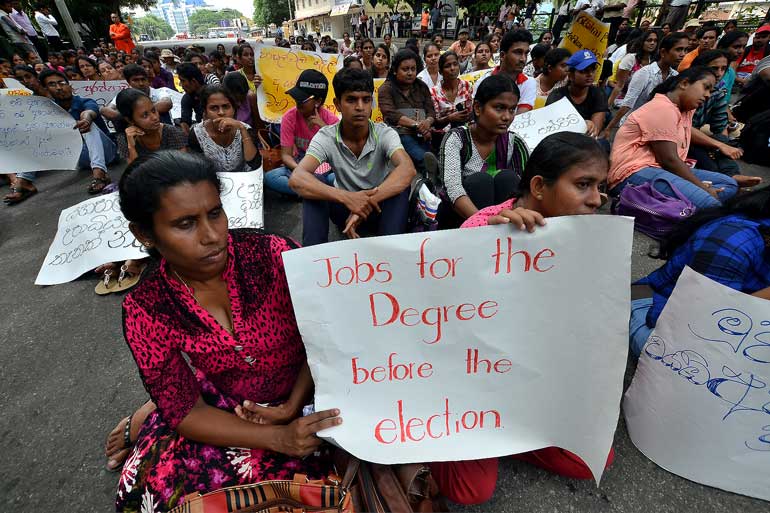
In Sri Lanka, unemployment benefits are a key part of the social welfare system that provides financial support to individuals who lose their jobs and are actively seeking employment. These benefits are designed to alleviate the financial burden caused by unemployment and help individuals meet their basic needs while they search for new job opportunities. Understanding the process of registering for unemployment benefits in Sri Lanka is vital for those who find themselves in a situation of job loss and need temporary assistance.
This article provides an in-depth guide to registering for unemployment benefits in Sri Lanka, covering the eligibility criteria, required documentation, the application process, and frequently asked questions to ensure that you can navigate the process smoothly.

1. Overview of Unemployment Benefits in Sri Lanka
Unemployment benefits in Sri Lanka are part of the government’s social welfare programs, which are aimed at supporting individuals during periods of unemployment. These benefits are primarily intended for individuals who have lost their jobs due to reasons beyond their control, such as economic downturns, redundancy, or involuntary termination of employment.
The key objectives of unemployment benefits are to:
- Provide temporary financial assistance to individuals who are unemployed.
- Encourage individuals to actively seek new employment opportunities.
- Support economic stability by ensuring that individuals have some financial relief during periods of job loss.

2. Eligibility Criteria for Unemployment Benefits
To qualify for unemployment benefits in Sri Lanka, individuals must meet specific eligibility criteria set by the relevant authorities. The following are the main eligibility requirements:
a. Age Requirement
- Applicants must be between the ages of 18 and 60 years.
b. Contribution to the Employees’ Provident Fund (EPF)
- The applicant must have been employed and making regular contributions to the Employees’ Provident Fund (EPF). The EPF is a compulsory savings scheme for workers in Sri Lanka, and it serves as a form of social security for employees.
c. Employment Status
- The applicant must be unemployed due to circumstances beyond their control, such as layoffs, economic downturns, or job cuts. Those who voluntarily resign or are dismissed due to misconduct generally do not qualify for unemployment benefits.
d. Length of Service
- The applicant must have been employed for a minimum period of time (usually one year) in a registered organization and contributed to the EPF during their employment.
e. Active Job Search
- Applicants must be actively seeking new employment opportunities and must be registered with the relevant government employment services to prove their efforts in finding a job.
3. Required Documentation for Registration
When registering for unemployment benefits, individuals must provide the following documents to complete the registration process:
a. National Identity Card (NIC)
- A valid National Identity Card is required to verify the applicant’s identity.
b. EPF Contribution Statements
- Applicants must submit documents showing their contributions to the Employees’ Provident Fund (EPF). This can usually be obtained from the employer or the EPF office.
c. Termination Letter or Proof of Job Loss
- A letter from the employer stating the reason for termination of employment (e.g., redundancy or layoffs) is required to confirm the unemployment status.
d. Proof of Active Job Search
- Applicants may need to provide proof that they are actively searching for new employment, such as records of job applications, interview invitations, or registration with government employment services.
e. Bank Account Details
- Bank account details are needed to facilitate the direct deposit of unemployment benefits. This ensures that payments are made securely and efficiently.
4. The Registration Process for Unemployment Benefits
Registering for unemployment benefits in Sri Lanka typically involves the following steps:
a. Step 1: Visit the Local Divisional Secretariat or Labor Office
- The first step in registering for unemployment benefits is to visit the local Divisional Secretariat or Labor Office. These government offices are responsible for managing unemployment claims and processing applications.
- You may also register online through the relevant government portals if available.
b. Step 2: Complete the Registration Form
- At the office, you will be required to fill out an unemployment registration form. This form asks for personal information, employment history, and details about the reason for your job loss.
c. Step 3: Submit Documentation
- Along with the completed registration form, submit all required documentation, such as your EPF contribution statements, termination letter, job search records, and other relevant documents.
d. Step 4: Verification of Information
- Once your application is submitted, the authorities will verify your information, including your EPF contributions and job termination status. This process may take some time, depending on the volume of applications being processed.
e. Step 5: Receive Unemployment Benefit Approval
- After verification, if you are found eligible, you will be approved for unemployment benefits. You will receive a confirmation letter outlining the benefit amount and the duration of support.
f. Step 6: Payment of Benefits
- Unemployment benefits are typically paid on a monthly basis, either through direct bank deposits or by cheque. The payment amount will be based on your previous earnings and contributions to the EPF.
5. How Much Will You Receive in Unemployment Benefits?
The amount of unemployment benefits you receive in Sri Lanka is calculated based on the following factors:
- Average Monthly Earnings: Your average monthly earnings during your last employment period will be used to calculate the benefit amount. The higher your earnings, the higher your unemployment benefits.
- EPF Contributions: The amount you have contributed to the EPF will also impact the benefit calculation. Individuals who have consistently contributed to the EPF for an extended period are more likely to receive higher benefits.
Typically, unemployment benefits amount to a portion of the employee’s last salary, and the total duration of the benefits may vary depending on the policies in place. In some cases, benefits may be provided for up to six months, though this can vary depending on the applicant’s circumstances and eligibility.
6. Duration of Unemployment Benefits
The duration of unemployment benefits in Sri Lanka is typically limited, and the exact length of support depends on the applicant’s previous employment history, the cause of unemployment, and other factors. In most cases, benefits are provided for a period of three to six months, with the possibility of extension if the individual is actively seeking employment.
7. Challenges in Registering for Unemployment Benefits
While the unemployment benefits registration process is designed to be accessible, some individuals may face challenges when applying. These challenges may include:
- Lack of Proper Documentation: Some applicants may not have the required documents, such as EPF contribution statements or termination letters, which can delay the registration process.
- Delayed Payment Processing: Due to high demand for unemployment benefits, the processing of applications and disbursement of funds may take longer than expected.
- Ineligibility: Some individuals may be found ineligible for unemployment benefits if they voluntarily left their jobs or were dismissed due to misconduct.
8. The Role of Government Employment Services
The Sri Lankan government has various employment services that assist individuals in finding new job opportunities while receiving unemployment benefits. These services include job matching, career counseling, and training programs designed to enhance employability.
Vocational Training and Skill Development
The government also offers vocational training and skill development programs through the National Apprentice and Industrial Training Authority (NAITA) and other institutions. These programs can help individuals acquire new skills and increase their chances of finding suitable employment.
For more information on training programs, visit: http://www.naita.gov.lk/
9. Conclusion
Registering for unemployment benefits in Sri Lanka is an important process for individuals who find themselves unemployed and seeking financial support. By following the registration steps, providing the necessary documentation, and meeting the eligibility criteria, you can ensure that you receive the support you need during your job search. Moreover, with government employment services and vocational training programs, there are additional resources to help you find new job opportunities and return to the workforce.
For more information on the unemployment benefits registration process and the services offered, you can visit the official website of the Ministry of Labour and Trade Union Relations: http://www.labourdept.gov.lk/








